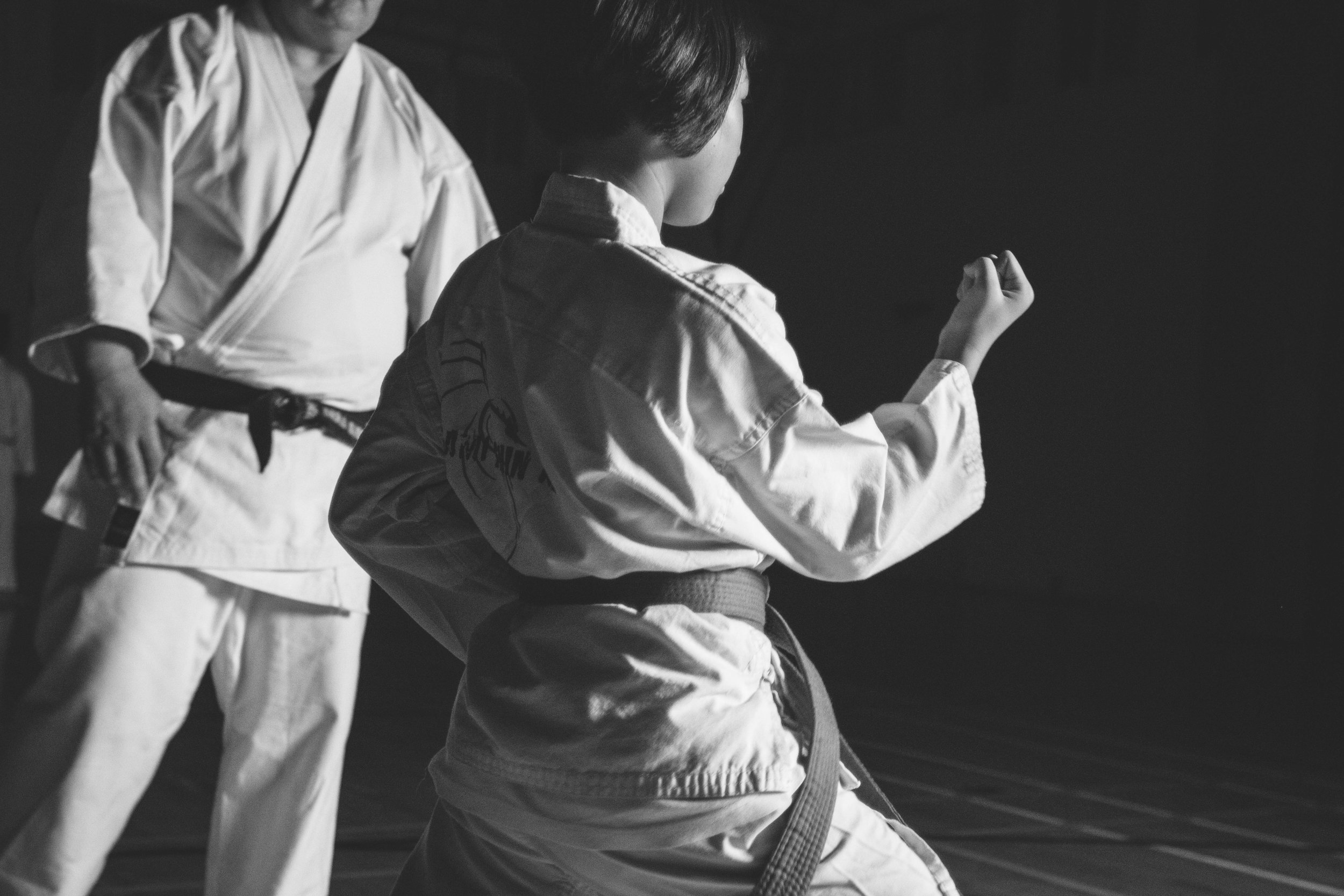In karate, a lot of different terms are used in practice, derived from Japanese. Below we’ve listed the Japanese terms we use, as well as other terminology you may hear as a student in our class.
Black Belt: Indicates the highest series of ranks in karate for someone who has achieved competence in the fundamentals and who is qualified to teach. There are 10 grades of black belt called dan.
Blocking: A series of techniques used to absorb, deflect, receive or redirect an opponent’s techniques.
Green Belt with Black Stripe: The fifth level of karate, out of eight student-level belts.
Brown Belt: The seventh level of karate, out of eight student-level belts.
Brown Belt with Black Stripes: The seventh level of karate, out of eight student-level belts.
Brown Belt with Three Black Stripes: The last level before black belt.
Dojo: Karate school or place of karate training.
Dojo Kun: Rules of the karate school.
Gi: Suit or uniform used for karate, comprised of top, pants, and belt.
Grappling: Techniques used in close-range fighting to gain control or physical advantage over an opponent.
Green Belt: The fourth level of karate, out of eight student-level belts.
Karate-ka: A practitioner of karate.
Kata: Ancient forms and models of detailed and preset movement patterns practiced in karate that contain fighting symbols, codes, and structures for self-defense.
Kihon: Fundamentals or building blocks taught and practised in karate, like breathing, self-awareness, posture, bio-mechanics, techniques, etc.
Kumite: Sparring, to make the motions of attack and defense for training purposes.
Leadership: Being a role model who, despite challenges, works with others to influence or guide a group of people toward positive changes.
Locking and Holding: grappling techniques used to control opponents’ joints or body.
Mawashi Geri: A roundhouse kick.
Mindfulness: Focusing one’s awareness on the present moment, paying attention to current state of mind, body, and feelings.
Yellow Belt with Black Stripe: The third level of karate, out of ten.
Personal Development: Improving self-awareness and developing identity through emotional, spiritual, physical, and mental practice.
Purple Belt: The sixth level of karate, out of eight student-level belts.
Seiza: Traditional form of upright kneeling in Japanese Karate and at the beginning and end of Karate classes.
Senpai: A term of respect used by a junior for a senior with more experience in karate.
Sensei: A karate teacher.
Striking: A set of techniques used to transfer force onto an opponent.
Throw: A set of techniques used to throw an opponent.
Yellow Belt: The second level of karate, out of eight student-level belts.
Yamai: Stop.
Yoi: Ready.

